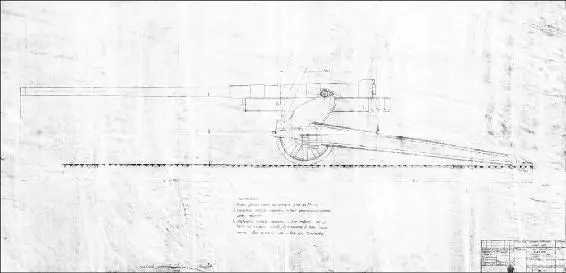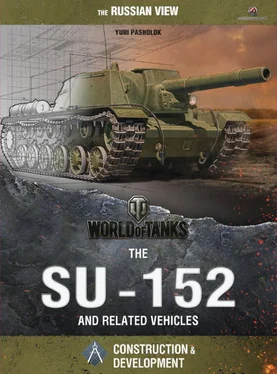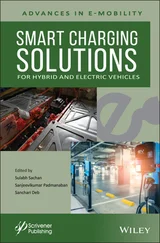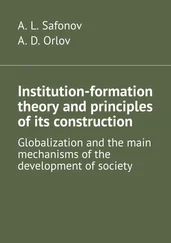According to Government Decree (No. 274-130ss, dated February 7, 1941), the Kirov Factory is to manufacture a batch of 10 BR-2 152 mm self-propelled guns based on the KV-3 tank.
It has not yet begun manufacturing the systems, and the contract sent by the Director has not been signed. According to a statement by Comrade Bondarenko, Kirov Factory’s chief engineer, the factory will not manufacture the vehicles due to the press of other work.
Please inform me who authorized the withdrawal of production of these vehicles from the Kirov Factory. {1} 1 TsAMO RF, collection 81, series 12104, file No. 147, p. 240.
It was only in late August 1941 that SP gun Project 212 was transferred to the Ural Heavy Machinery Plant (abbreviated UZTM and located in Sverdlovsk, now named Yekaterinburg). The choice of UZTM as the site where work on the bunker buster would continue was no accident. The giant Sverdlovsk factory was the main supplier of KV-1 armored hulls for the Chelyabinsk Tractor Plant. Equally important was that, as the war began, UZTM’s design Bureau had a wealth of experience in the design and manufacture of howitzers and corps-level artillery. The factory’s design bureau under V. N. Sidorenko had developed the U-1 howitzer in 1937, and in 1938, it had developed the U-2. The following year, it developed the U-3 203 mm corps-level heavy howitzer. The decision was made in 1940 to engineer production of the M-30 122 mm howitzer at UZTM, and its creator, Fedor Petrov, traveled to Sverdlovsk for that purpose. Fedor’s business trip lasted 34 years. He became chief of the factory design bureau at his new location. In 1941, UZTM received a number of initiatives from Sverdlovsk that had been discussed in the GAU. For example, a project for a 107 mm antitank gun under the designation UML-20 was discussed in July. Like the M75, this gun was based on the ML-20’s carriage. But as with a number of other similar projects, the UML-20 did not go beyond the conceptual design stage.

The UML-20 was an initiative project for the ML-20 107 mm antitank gun proposed by F. F. Petrov in July 1941 (TsAMO).
Despite the design bureau’s competent team, the new task was a serious challenge for the factory. In a letter to GAU Deputy Chief Gen. V. I. Khokhlov on October 7, 1941, UZTM Chief Engineer A. S. Ryzhkov said the following:
In response to your letter No. 281377 of August 25, 1941, we inform you that the Ural Heavy Machinery Plant has the design staff needed to begin work on the task assigned by you and signed by Marshal of the Soviet Union Comrade Kulik to develop a self-propelled gun (a bunker buster).
Because Ural Heavy Machinery Plant employees have not previously worked on topics of this type, and the plant has no materials on this or similar topics, to assure a proper and timely solution of the problem, the following materials must be sent to them or the appropriate organizations instructed to send them:
1) Drawings, models, and descriptions of similar foreign systems;
2) The same for heavy tanks;
3) The following materials:
1. A full set of the drawings for the KV-3 tank, and
2. A full description of the KV tank and its equipment.
3. Complete technical specifications for the KV tanks.
4. The complete set of engineering analyses done on the KV tank.
5. All drawings and engineering analyses of the BR-2 152 mm gun traversing mechanism.
6. Drawings of the DT machine gun.
7. Drawings of the PPD submachine guns.
8. Drawings of the PT-1 and KT-1 sights.
9. Description of the PT-1 and KT-1 sights.
10. Drawings of the fixture or storage racks for the M-10 152 mm tank howitzer projectiles.
4) Samples of the following:
1. DT machine gun.
2. PPD submachine gun.
3. PT-1 sight.
4. KT-1 sight.
5. All other devices.
6. Flags.
Please instruct the Chelyabinsk Factory to allow a team of designers from our plant to observe the KV-3 and KV tanks during testing.
Also, please instruct the Chelyabinsk Factory’s special design bureau and the factory that manufactures the engines to support the necessary consultations between our designers and the designers of the engines for the system.
We believe it is especially important that you order a captured heavy tank sent to the Ural Heavy Machinery Plant so that our designers, production engineers, and production workers can study it while developing the system. {2} 2 TsAMO RF, collection 38, series 11355, file No. 190, p. 146.

Engineering analysis of the UML-20 107 mm antitank gun (TsAMO).
The tank industry was not prepared for the KV-3 in October 1941, much less for the bunker buster based on it. The Kirov Factory had been evacuated to Chelyabinsk (and renamed the Chelyabinsk Kirov Factory, or ChKZ for short), as had the Izhor Factory, which produced the KV’s armor. UZTM was temporarily given the name Izhor Factory. Its original name was only restored on January 4, 1942. An additional item on UZTM’s plate was the evacuation of the Kalinin Factory No. 8 and the Ordzhonikidze Factory No. 37 (Moscow) to the plant’s grounds in the fall of 1941. Factory No. 75 which had developed the V-5 engine, was evacuated to Chelyabinsk, and its main mission was to begin producing the V-2 diesel engine, the need for which was much greater. The situation with production of the BR-2 152 mm guns was no better: the last guns of that type had been manufactured in 1940 by Factory No. 221 (“Barricades” in Stalingrad, now named Volgograd).
The bunker buster project was dropped as a high-priority task, but not for long. The system showed up again in GAU correspondence in November 1941. A report by Military Engineer 2nd Class Getmanov (of the Field Artillery Armament Directorate’s Main Artillery Directorate) discussed work done in Chelyabinsk from November 12 through 24, 1941:
During this period it was found that:
a) As regards the issue of artillery prime movers:
State Defense Committee Decree No. 899ss dated November 14, 1941, instructed the People’s Commissariat of the Tank Industry (NKTP) to expand the production of tanks, for which purpose a number of factories have been transferred to the NKTP from other Commissariats, including all tractor plants.
State Defense Committee Decree No. 982 of November 13, 1941, relieved the Kirov Factory (ChTZ) of responsibility for manufacturing artillery tractors (the S-2) and agricultural tractors (the S-65).
State Defense Committee Decree No. 892 is understood by the People’s Commissariat of the Tank Industry as giving it the right to cease tractor production at other factories as well (the Voroshilovets at Factory No. 183, and the STZ-5 at the Stalingrad Tractor Plant).
Therefore, production of tractors has ceased.
The situation with artillery prime movers was bad before this, but after this decision artillery may be left without prime movers.
I believe the People’s Commissar of Defense, Comrade Stalin, should be informed about this situation.
b) As regards the issue of self-propelled guns:
A study of this issue for a report prepared for Comrade Kotin, Deputy People’s Commissar of the Tank Industry at the People’s Commissariat of the Tank Industry and with designers at UZTM and the Kirov Factory, came to the following conclusions:
I. The work schedule of the People’s Commissariat of the Tank Industry for 1942 includes the following self-propelled guns:
Читать дальше














